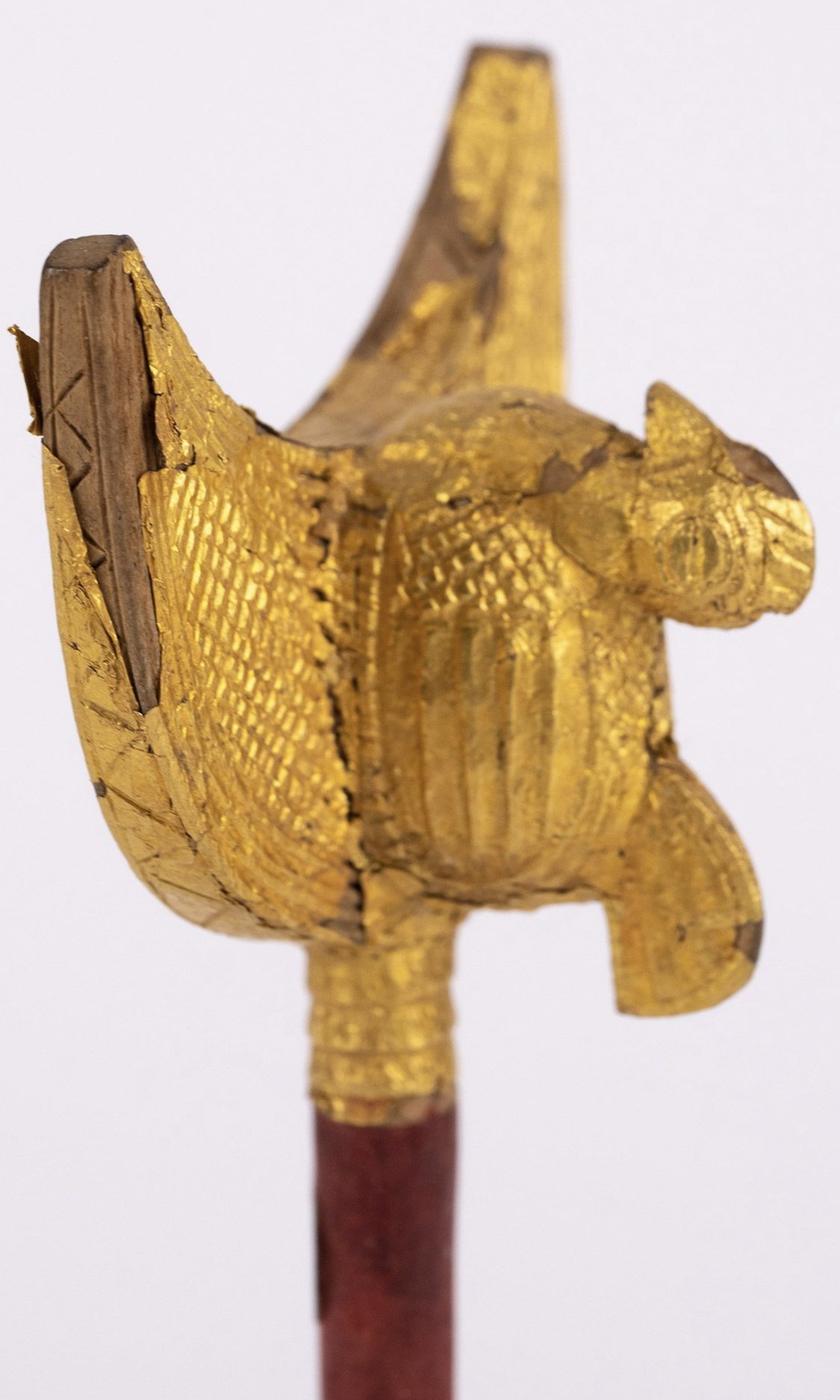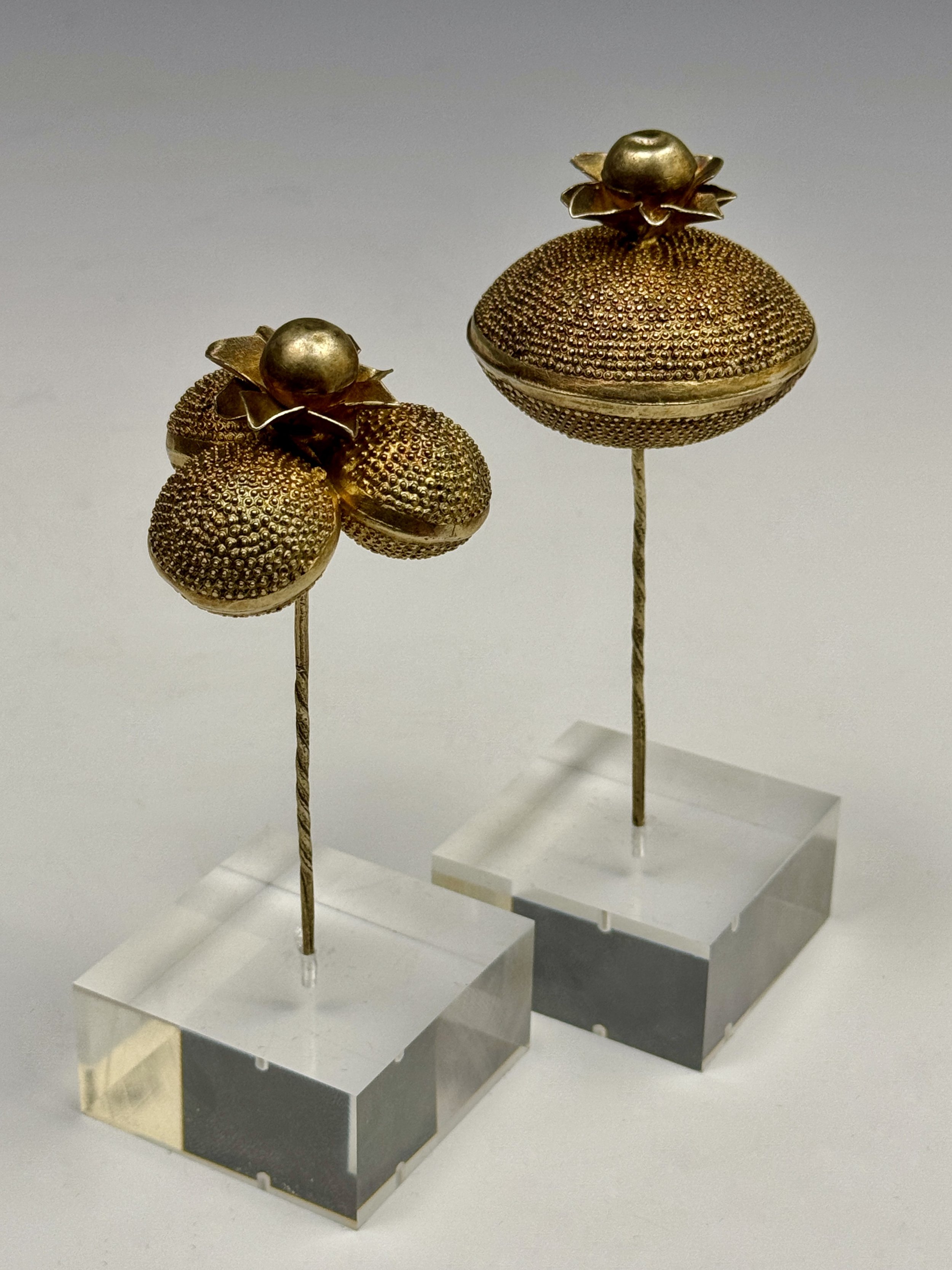Akan and Baule Hair Adornment

Hairpin, Asante, Ghana. Gold alloy. H 8.5 cm. The pin consists of three birds on a flower. The motifs shown always point to people, animals or objects that allegorically stand for praiseworthy qualities and sayings. Hairpins were generally believed to have originated from European influence, particularly Victorian fashion. The filigree technique used here is of exquisite quality. The British museum writes “Hairpins were inspired by Europeans and first became popular among the Fante communities on the coast in the early nineteenth century. These pins were worn by women fixed into their elaborately plaited hair or sometimes, in the case of Fante women, into elaborate wigs made of horsehair.” ex Dr. Andreas Vontobel (1931-2011), Waltalingen




A Baule (Baoulé) hair pin ornament with the image of a hen on a crescent (moon). Wood covered with gold foil, 16.5 cm. In Baoulé art, the hen image often represents fertility, motherhood, and nurturing. The hen is revered as a symbol of fertility because of its ability to lay eggs and hatch chicks. The crescent image, representing the moon, carries connotations of femininity, transformation, and spirituality. It serves as a link between the earthly and spiritual realms connecting with ancestral worship and the divine.



Five carved wood combs. Asante, Ghana. Largest approx. 9" L. Some damaged sections with old collection inventory markings. Estate of Thomas McNemar, (1931-2020.) McNemar lived and collected throughout Central and West Africa in the 1960s and 70s. He established galleries of African Art in New York and San Francisco, selling to museums and public and private collections in the United States and Europe.

Two Akan (Fante) fabricated gilt silver/silver-gold alloy hairpins with a floral pattern (Victorian style), 2” dia, Ghana. “Many Victorian motifs and patterns are still being reproduced in contemporary versions. The continuing interest in this design vocabulary throughout the twentieth century makes it very difficult to date individual pieces. Victorian designs are still especially prevalent in hair adornment where multiple versions of ornamental combs and pins are embedded in the elaborate wigs of Fante women.” - D.Ross. Ex collection of Dr. Arikana Chihombori-Quao and Dr. Nii S. Quao. Dr. Arikana-Quao was the African Union’s Ambassador to the United States. #mooscollection



Fante woman with a similar hairpin. Photo credit: Eliot Elisofon, 1971.